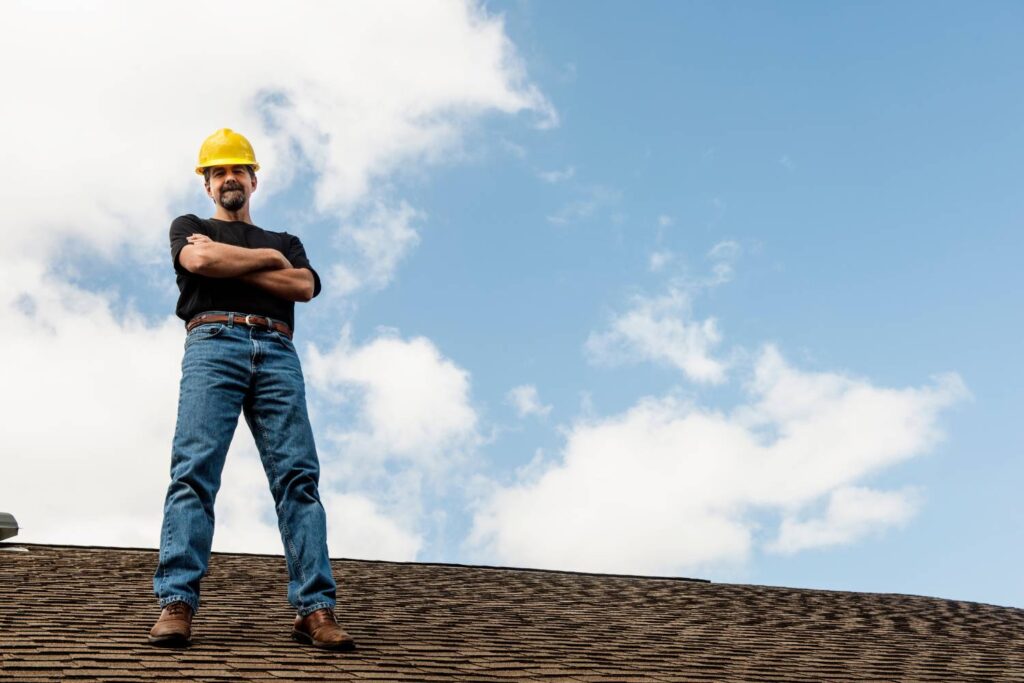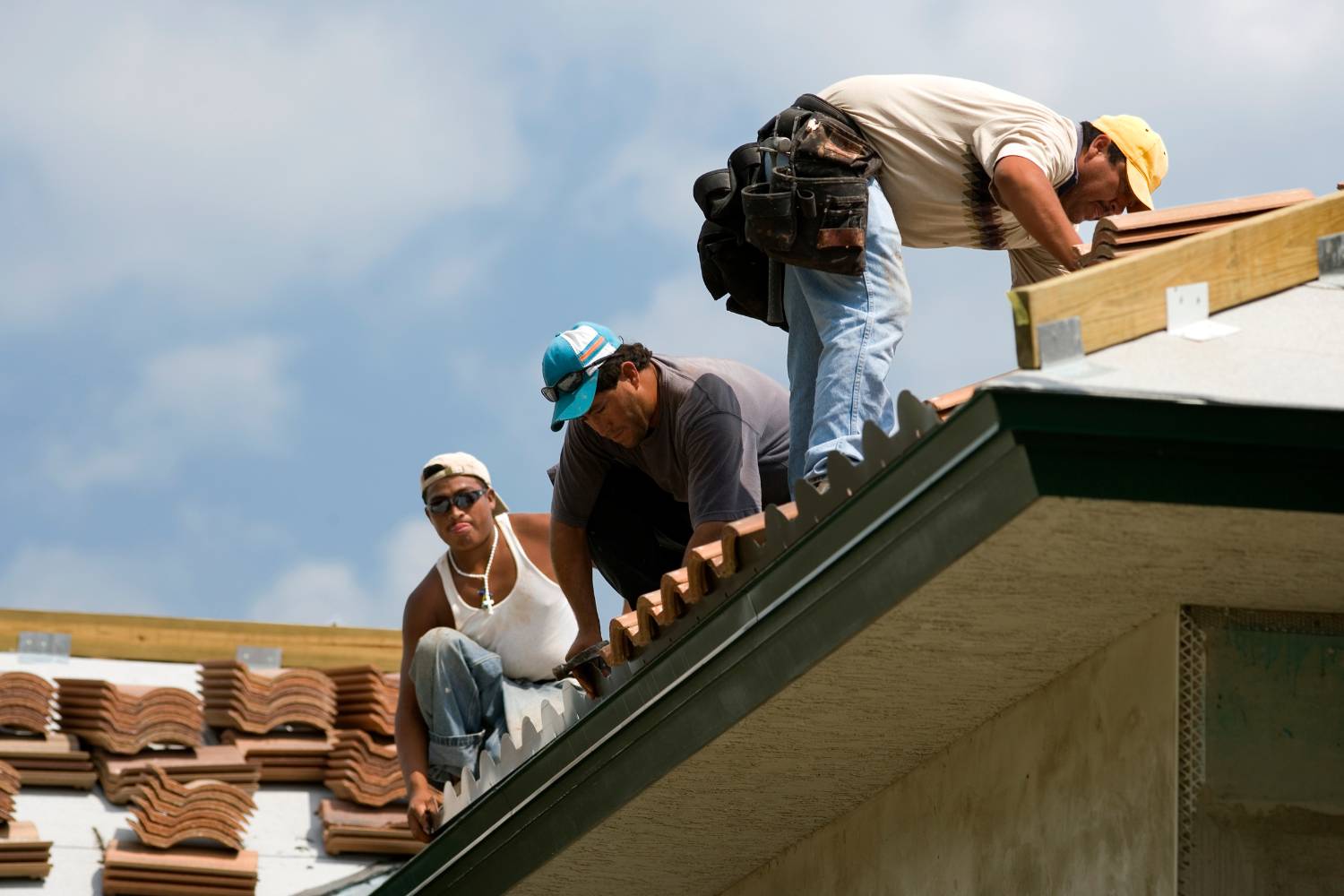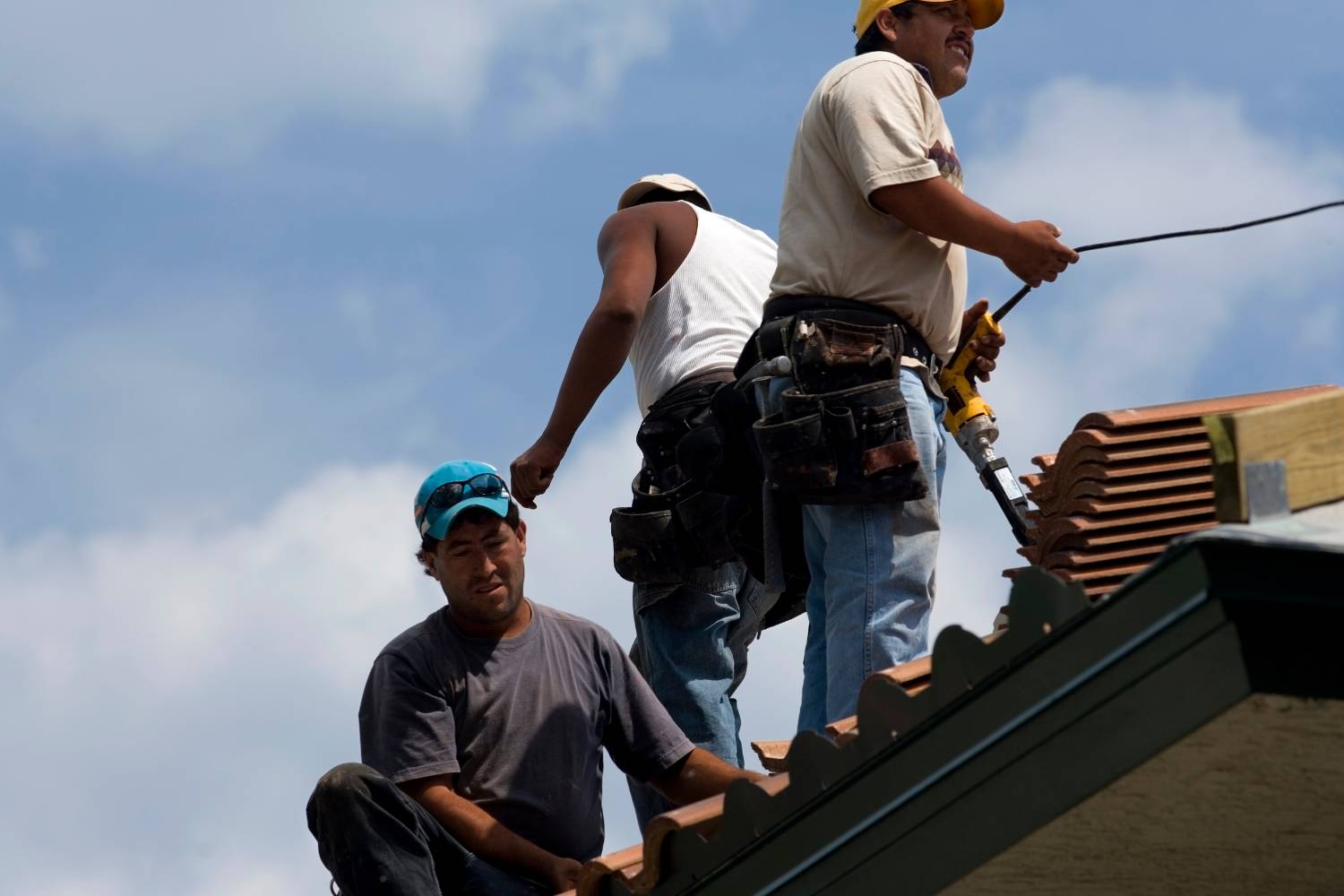Anti-moss and algae treatments are essential in preserving clean, safe, and visually appealing surfaces. These treatments not only prevent unsightly growth but also protect against potential damage and health hazards caused by moss and algae.
In this post, we delve into the types of treatments available and how to choose the most effective solution for your specific needs.
What Are Anti-Moss And Algae Treatments?
Anti-moss and algae treatments play a crucial role in maintaining clean, safe, and aesthetically pleasing surfaces across various environments. These treatments help prevent and eliminate unwanted organic growth, which can cause structural damage, health hazards, and unsightly appearances. Understanding the different products and methods available for treating moss and algae can aid in choosing the most effective solution for specific needs.
Weiss Algae And Moss Treatment
The Weiss Algae and Moss Treatment is a powerful solution that offers long-lasting protection against moss and algae growth. Its advanced formula is designed to be effective for up to 12 months, making it an excellent choice for areas prone to organic growth, as it reduces the need for frequent reapplications.
This treatment is highly versatile and safe for use on various surfaces, including natural stone, porcelain, marble, ceramic, and different types of concrete and decorative paving. Its composition is free of solvents, acids, and caustic soda, ensuring that it does not damage the treated surfaces.
Applying the Weiss treatment is straightforward and convenient. The product can be diluted with water, with different dilution ratios available depending on the severity of the staining. For mild cleaning and prevention, a ratio of 1:50 is recommended, while more stubborn stains might require a dilution of 1:10.
Once diluted, the solution can be applied using a sprayer or a watering can, covering approximately 10m² per litre. The application process does not require any scrubbing, making it easy to use. Additionally, the Weiss treatment is chlorine-free, which means it avoids the harsh effects associated with chlorine-based products, making it a safer option for both users and the environment.
Why Do Roofs Need Anti-Moss And Algae Treatments?
Roofs are continually exposed to the elements, making them susceptible to the growth of moss, algae, and mould. These organisms not only mar the aesthetic appeal of a roof but can also cause significant structural damage if left untreated. Anti-moss and algae treatments are essential to maintaining the longevity, safety, and appearance of your roof. This blog will explore why these treatments are necessary and the best practices for keeping your roof in top condition.
Understanding The Problem
Moss and algae growth are particularly prevalent in damp and humid climates. Moss is a small green plant that thrives in moist environments, often seen on the shaded north-facing slopes of roofs. It collects water through its leaves and can cause the leading edges of shingles to lift or curl, increasing the risk of shingle blow-off during wind events. Algae, on the other hand, typically appear as black streaks or discolouration on roofs. It grows flat against the surface and is spread by airborne spores, birds, or small animals.
Preventing Structural Damage
Moss can cause significant structural damage to roofs. As it grows, it retains moisture, which can seep into the roofing materials and cause them to deteriorate. This moisture retention can lead to rot and the lifting of shingles, making the roof more susceptible to leaks and other weather-related damages.
Maintaining Aesthetic Appeal
Algae and moss can severely impact the aesthetic appeal of a home. Algae cause unsightly black streaks that can make a roof look old and poorly maintained. Regular treatments help maintain the roof’s appearance, preserving the overall look of your home.
Health And Safety Risks
Mould growth on roofs can pose significant health risks, including respiratory issues and allergic reactions. Algae and moss can also create slippery surfaces, increasing the risk of falls and accidents when walking on the roof. Proper treatments help eliminate these hazards, ensuring a safer environment.
When Is the Best Time to Apply Anti-Moss and Algae Treatments?
Roof maintenance is crucial for the longevity and health of your home. Among the various maintenance tasks, treating and preventing moss and algae growth on roofs is particularly important. Moss and algae not only affect the aesthetic appeal of your home but can also cause significant damage if left Unchecked. The timing of anti-moss and algae treatments plays a vital role in their effectiveness. This blog will explore the best times of the year to apply these treatments and offer tips on how to do so effectively.
Summer: The Optimal Season
The summer months are generally considered the best time to apply anti-moss and algae treatments. During this period, the weather is drier, and moss growth is dormant. The heat causes moss to become brittle, making it easier to remove manually with a broom or light pressure wash. Treating your roof in summer ensures that the moss and algae are less likely to absorb moisture, enhancing the effectiveness of the treatments.
Early Fall: Before The Rainy Season
Another effective time to apply treatments is just before the fall rainy season. Moss and algae growth accelerates during the rainy months due to increased moisture. By treating your roof in early fall, you can prevent moss from gaining a foothold. Applying treatments when moss is actively growing ensures that the chemicals are absorbed thoroughly, killing the moss and algae before they can cause significant damage.
Spring: Post-Winter Maintenance
Spring is also a good time for roof treatments, especially in areas with mild winters. As the weather warms up and the roof dries out, it becomes easier to apply treatments and ensure they penetrate effectively. Spring treatments can help address any growth that may have occurred during the winter months and prepare your roof for the coming summer.
What Are The Steps To Apply Anti-Moss And Algae Treatments?
Applying anti-moss and algae treatments to your roof is crucial for maintaining its integrity and aesthetic appeal. Moss and algae can cause significant damage if left unchecked, leading to costly repairs. Here is a comprehensive guide to effectively applying these treatments.
Step 1: Safety Precautions
Before starting, ensure you have the necessary safety gear, including non-slip shoes, a sturdy ladder, and a safety harness. It's essential to avoid working on wet or windy days to prevent accidents.
Step 2: Preparation
Inspect your roof to identify the extent of moss and algae growth. Understanding the severity will help you choose the appropriate treatment method. Gather all necessary materials, including a moss and algae killer (chemical or natural), a garden sprayer or hose-end sprayer, a soft brush, and water.
Step 3: Manual Removal
Clear the roof of leaves, twigs, and other debris using a broom or leaf blower. This prevents moisture retention, which contributes to moss and algae growth. For light infestations, use a soft brush to gently scrape off moss and algae. Start from the top and work your way down to avoid damaging shingles. Be cautious not to dislodge protective granules from the shingles
Step 4: Application Of Treatment
For chemical treatments, follow the instructions on the product label carefully. Mix the solution as directed, usually in a garden sprayer or hose-end sprayer. Common treatments include:
- Bleach Solution: A 50:50 mix of laundry strength liquid chlorine bleach and water can be effective. Apply this solution to the affected areas and let it sit for about 30 minutes.
- Natural Compounds: White vinegar mixed with water (2 gallons of water to 1.5-3.5 cups of vinegar) is a less toxic alternative. Spray the mixture on damp roof shingles and let it work for about 45 minutes before scrubbing and rinsing.
Spray the treatment evenly across the roof, ensuring all affected areas are covered. For large areas, use a sprayer to ensure thorough application.
Step 5: Rinsing
After the treatment has had time to work, rinse the roof thoroughly with a garden hose on a low-pressure setting. Avoid using a pressure washer as high pressure can damage shingle. Depending on the severity of the growth, you may need to repeat the process several times to completely remove the moss and algae.
Step 6: Post-Treatment Maintenance
To prevent future growth, consider installing zinc or copper strips along the roof. These metals release ions when it rains, which inhibit moss and algae growth. Regularly clean gutters, trim overhanging branches, and remove debris from the roof to prevent moisture buildup. Regular inspections can help catch and treat moss and algae growth early. For extensive moss and algae growth or if you're uncomfortable working on the roof, consider hiring a professional roofing contractor. They have the expertise and equipment to safely and effectively treat your roof.
What Are Some Alternative Methods To Control Moss And Algae?
Moss and algae growth on roofs can lead to significant problems, including structural damage and unsightly stains. While traditional chemical treatments are effective, there are several alternative methods to control these unwanted organisms. These methods not only help maintain the roof's integrity but also reduce the environmental impact of chemical use.
Zinc And Copper Strips
Installing zinc or copper strips at the roof's peak can be an effective long-term solution. When rainwater runs over these metal strips, it releases ions that inhibit the growth of moss and algae. These ions flow down the roof, creating an environment hostile to these organisms. Zinc and copper strips are particularly effective because they provide continuous protection without the need for frequent reapplication.
Algae-Resistant Shingles
Modern technology has led to the development of algae-resistant shingles. These shingles are treated with substances that prevent algae growth, providing a durable and aesthetically pleasing roofing solution. Shingles with 3M™ Copper Granules, for example, blend into the roof's color while releasing copper ions that inhibit algae growth. This solution is ideal for those looking to replace or upgrade their roofing materials.
Improved Roof Ventilation
Proper roof ventilation is crucial in preventing moisture buildup, which can lead to moss and algae growth. A well-ventilated attic allows for efficient air exchange, reducing condensation and moisture accumulation. Ensuring that your roof has adequate ventilation can significantly decrease the likelihood of moss and algae establishing themselves.
Trimming Overhanging Branches
Overhanging tree branches can provide shade and trap moisture, creating a conducive environment for moss and algae growth. Trimming these branches allows more sunlight to reach the roof, drying out any moisture and making it harder for moss and algae to thrive. Regularly maintaining the surrounding vegetation is an effective preventive measure.
Regular Roof Maintenance
Regular maintenance is key to preventing moss and algae growth. This includes cleaning gutters, removing debris such as leaves and twigs, and inspecting the roof for any signs of growth. Using a leaf blower or a soft brush can help keep the roof clear of organic matter that can trap moisture.
Natural And Diy Solutions
Several natural and DIY solutions can be effective in controlling moss and algae. These include:
- Dishwashing Soap Solution: Mix 240 ml of dishwashing soap with 7.5 liters of water and apply to the affected areas. Let it sit for 20-45 minutes before scrubbing and rinsing with water.
- Oxygen Bleach: Combine 450 grams of powdered oxygen bleach with 7.5 litres of water. Apply the mixture, let it sit, then scrub and rinse.
- Chlorine Bleach: A mix of 500 ml of chlorine bleach with 7.5 litres of water can be effective. Apply, let it stand for about 30 minutes, then rinse thoroughly.
- White Vinegar: Combine 500 ml of white distilled vinegar with 7.5 litres of water. Apply, let it sit, scrub lightly, and rinse.
Conclusion
The application of anti-moss and algae treatments is crucial for maintaining the integrity and appearance of your roof. Regular treatments prevent unsightly growth, protect against structural damage, and mitigate health hazards associated with moss and algae. By understanding the different types of treatments and methods available, you can choose the most effective solutions tailored to your specific needs.
Whether you opt for chemical treatments, natural alternatives, or preventive measures like zinc and copper strips, the key to a long-lasting and beautiful roof lies in consistent maintenance and timely interventions. Ensuring your roof remains free from moss and algae not only enhances its lifespan but also preserves the overall aesthetic appeal and safety of your home.
Frequently Asked Questions
Anti-moss and algae treatments are specialised solutions designed to prevent and eliminate the growth of moss, algae, and other organic matter on roofs. These treatments are important because moss and algae can cause significant structural damage by retaining moisture, leading to roofing material deterioration and potential leaks. Additionally, they help maintain the aesthetic appeal of the roof and prevent health hazards associated with mould growth.
The best time to apply anti-moss and algae treatments is during the dry summer months when moss growth is dormant, making it easier to remove manually and enhancing the effectiveness of the treatments. Early fall is also an effective time, as it prevents moss from growing during the rainy season. Spring can be suitable as well, particularly for addressing growth that may have occurred during the winter.
To apply anti-moss and algae treatments, start by taking necessary safety precautions, such as wearing non-slip shoes and using a sturdy ladder and safety harness. Inspect the roof to determine the extent of growth and manually remove debris and light infestations with a soft brush. Mix the chemical treatment as directed and apply it evenly across the roof with a sprayer. After the treatment has worked, rinse the roof thoroughly with a garden hose on a low-pressure setting to avoid damaging the shingles.
Yes, there are several alternative methods to control moss and algae, including installing zinc or copper strips at the roof's peak, which release ions that inhibit growth when it rains. Algae-resistant shingles treated with substances to prevent algae growth are also effective. Ensuring proper roof ventilation and trimming overhanging branches to reduce shade and moisture can help prevent moss and algae. Regular maintenance, such as cleaning gutters and removing debris, is crucial as well.
When applying anti-moss and algae treatments, it is essential to prioritise safety. Wear non-slip shoes and use a sturdy ladder and safety harness to prevent falls. Avoid working on the roof during wet or windy conditions. Follow the instructions on the treatment product label carefully, and use protective gear like gloves and safety goggles to avoid contact with chemicals. If you are uncomfortable working on the roof, consider hiring a professional roofing contractor.


